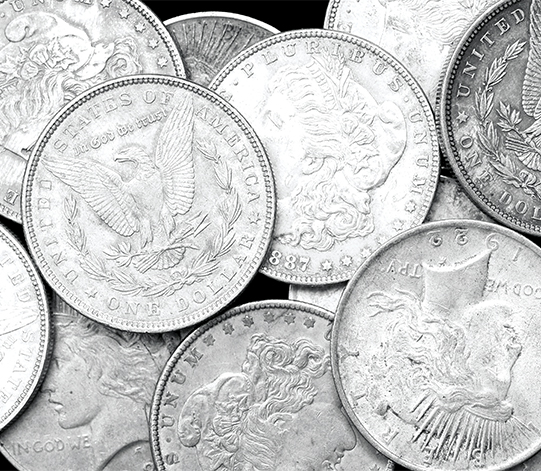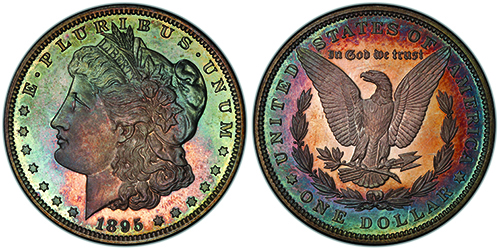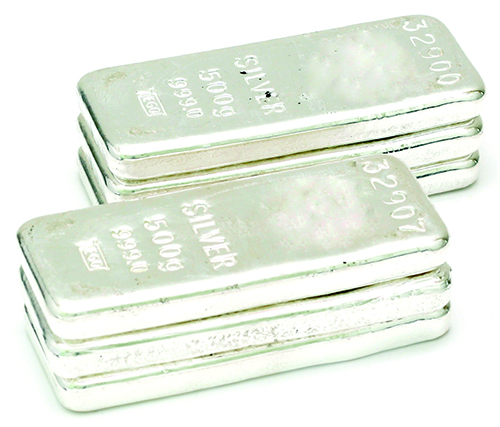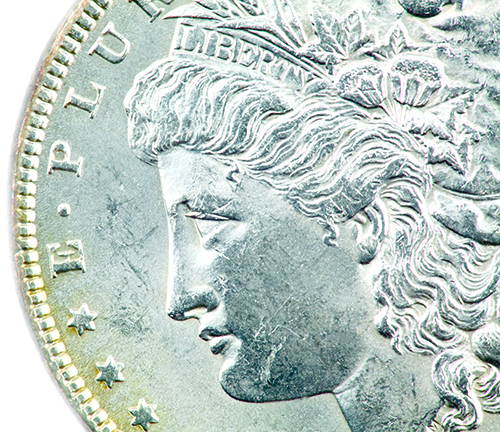
By James Passin
One of my favorite coins has always been the Morgan silver dollar, minted by the U.S. from 1878 to 1904 – and then, after a hiatus, in 1921. It is a precious metal store of value, with each coin’s original content being nearly an ounce of silver (0.7734 oz. silver). The silver content alone makes the Morgan a sterling hold, but this coin is a double play: Not only is it made from precious metal, but it also contains valuable numismatic history. From Anna Willess Williams, who modeled for George Morgan’s portrait of Ms. Liberty, to the dissension between Morgan and fellow engraver Charles Barber, this grand coin is the quintessential collectible.
New Realizations About Morgans
Some years back, I learned firsthand what the drawbacks are for someone such as me who has an affinity for these coins. My vast experience as a hedge fund manager has taught me to embrace quantity and quality. I was never one to buy slabbed Morgan dollars for more than $100 or so apiece, and rare dates just don’t do it for me. So I decided to buy some Choice and Gem Mint State common-date Morgan dollars. A couple thousand MS-63s and MS-65s in NGC and PCGS slabs didn’t seem like such a big deal – at least not on paper.

Then the coins arrived! There were boxes and boxes of these beautiful coins. I had never, ever anticipated that the collective size of these coins would be so massive.
The realization then dawned on me: It takes a tremendous amount of space to store generic Morgan dollars in any quantity that represent significant wealth in the form of silver. Even if you have access to, or are able to build, a secured storage facility of adequate size for the purpose of storing large amounts of physical silver, the inconvenience of transporting dozens of bulky double-row boxes of slabs or crates of silver bars, let alone spending hours trawling through stack after stack of silver dollars in slabs, renders silver’s utility as a true monetary instrument marginal.
The silver price is too volatile and sends too many false technical signals to even serve as a profitable vehicle for short-term speculative trading (perhaps you are much better silver market timer than I am!).
Silver Premiums
The only time that I jumped in to buy silver in any size was when the price consolidated under 5. I recall buying some Silver Certificates from Perth Mint when silver traded at 4.80. Sadly, I could not convince my wife at the time to forego a penthouse Manhattan condo that she was eyeing in favor of 2 million ounces of silver, which I argued was a much better place to tie up capital; of course, she insisted that “you cannot live in silver.” And, of course, the silver price ascended 8x – and I am now happily remarried to another woman who respects my major trading calls.

While I have bought and sold silver coins in quantity, I cannot get my head around the premiums still enjoyed by common-date silver dollars. For example, these generic Morgan dollars that I like so much are still holding considerable premiums above the melt value of the silver – MS-63 Morgans are worth $50 or so each. (And MS-63 Peace dollars are worth about $40.) I cannot get myself to pay these premiums for generic silver dollars in quantity when spot silver is in a grinding multi-year bear market.
These premiums are inexplicable in light of the precipitous decline of premiums for AU-50 to MS-62 common-date Saint-Gaudens and Liberty Head double eagle gold coins. It makes more sense to use the historic weakness in the generic gold coin market to accumulate slabbed gold $20s than to gamble in the silver coin market, unless you are a collector and just want a few rare coins.
Possibly, the upper end of the rare silver coin market could represent some speculative value. Vintage silver Type coins collected by the upper middle class have been on the decline for 15 or more years. There are some wonderful Gem coins that were $8,000 at the market height in 1989 that are $2,000 today. However, there are not a lot of collectors of these extraordinary numismatic coins.
Silver Market Analysis

Ultra-rare silver coins collected by the 1% are holding their own or increasing in value. Vintage silver commemorative coins have been declining steadily. I can cite examples of some Gem coins that were $6,000 in 1989 that are $600 today. There are very few serious collectors of these coins right now.
From a pure technical perspective, the silver chart does not look promising. Silver keeps breaking below support levels and has not formed any convincing reversal patterns on any time frame. After silver peaked in 1980 during the infamous failed Hunt brothers market operation, almost hitting the 40 level, silver crashed 84% before bottoming, reversing the entire bull market; silver has only fallen 65% since its peak of 41.66 in 2011. My feeling is that more pain is necessary before silver can find a major bottom and stage any kind of sustainable rally. Of course, as I mentioned, silver tends to form fake technical patterns.
So it may be a mistake to overanalyze silver chart patterns.
Looking at the universe of hard asset alternatives, cryptocurrency, volatile as it is, might actually represent a better addition to gold than silver at this instant in time. Major cryptocurrency prices have gotten totally torched, and this moment could possibly represent a historic chance for the proverbial “getting your feet wet.”
About the Author: Famed “daredevil investor” James Passin, Chartered Market Technician, is Executive Chairman of Blockchain Holdings, Ltd. (symbol BCX on the Canadian Securities Exchange), a public company listed in Canada. The company provides unique insights into the growing ecosystem of crypto-assets through bcxdata.com. BCX developed proprietary indices to measure broad categories of cryptocurrencies. By improving transparency, BCX hopes to also improve liquidity in cryptocurrency markets.














